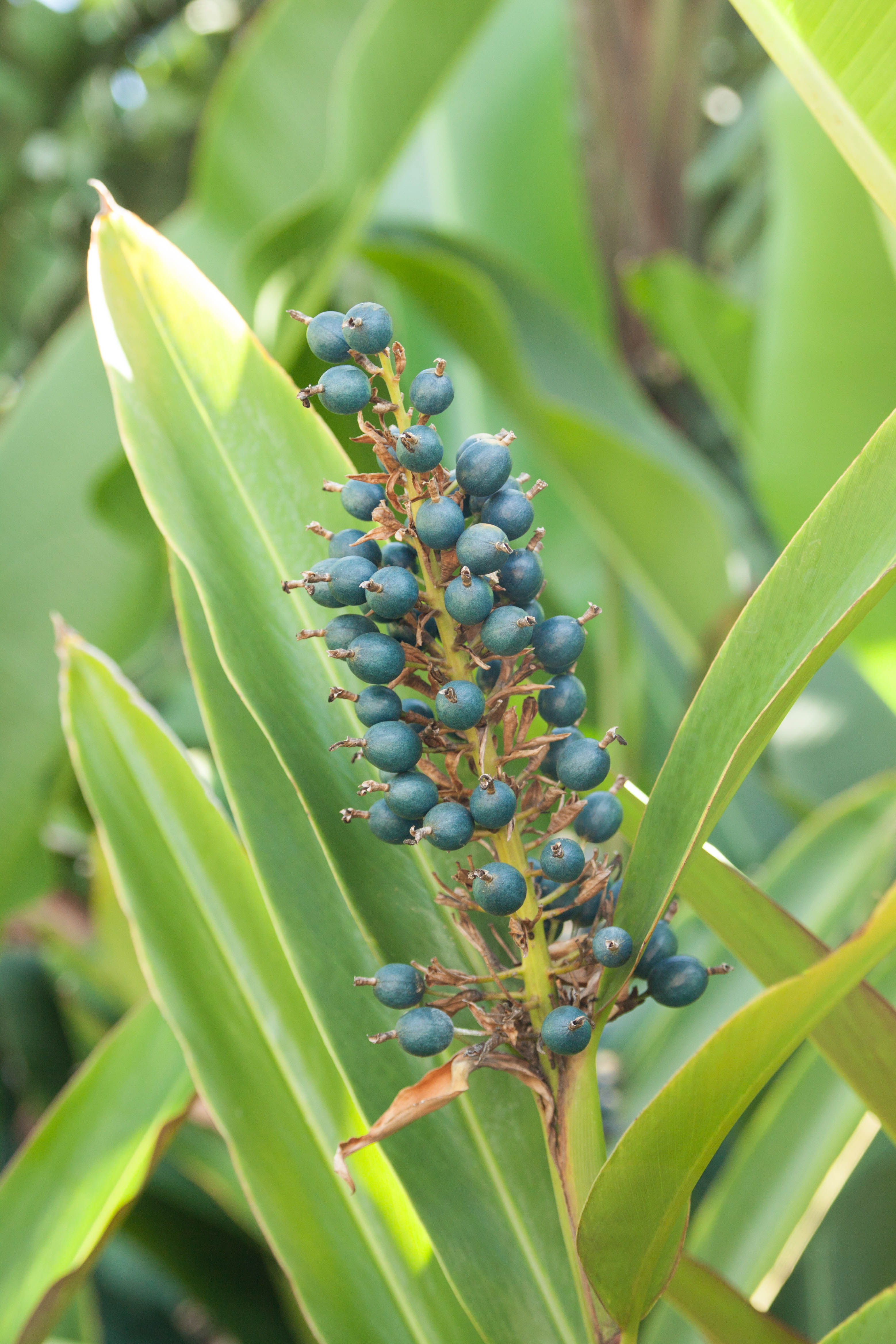Native ginger
(Alpinia caerulea)

Description
Alpinia caerulea, commonly known as native ginger or in the case of the subspecies from the Atherton Tableland red back ginger, is an understorey perennial herb to 3 m, growing under rainforest, gallery forest and wet sclerophyll forest canopy in eastern Australia. Leaves are up to 40 cm long and 3-10 cm wide. The inflorescence is 10-30 cm long. The blue capsule is globose 1 cm across, with a brittle outer covering containing black seed and white pulp. The white pulp of native ginger has a sour flavour, used to activate salivary glands to moisten the mouth when bushwalking, with the seeds usually being discarded. The capsules can also be used as a flavouring spice, using the whole fruit and seed dried and ground. They can also be used to impart a sour flavour and red color in herbal teas. The centers of new shoots have mild gingery flavour, and are excellent in various dishes as a ginger substitute. The roots can also be used in cooking, and have a more earthy resinous flavour. Generation of fill Alpinia caerulea. It was first described by Robert Brown, and given the exact name of George Bentham. Alpinia caerulea belongs to the genus fill, and relative lime. Alpinia is a genus of flowering plants in the ginger family, Zingiberaceae. It is named for Prospero Alpini, a 17th-century Italian botanist who specialized in exotic plants. Species are native to Asia, Australia, and the Pacific Islands, where they occur in tropical and subtropical climates. Several species are cultivated as ornamental plants. Species of the genus are known generally as shell ginger. These herbs lack true stems, but have pseudostems usually up to about 3 metres (9.8 ft) long which are composed of the overlapping leaf sheaths. A few species have been known to reach 8 metres (26 ft). They grow from thick rhizomes. The leaves are lance-shaped to oblong. The inflorescence takes the form of a spike, a panicle, or a raceme. It may be hooded in bracts and bracteoles. The flower has a shallowly toothed calyx which is sometimes split on one side. The flower corolla is a cylindrical tube with three lobes at the mouth, the middle lobe larger and hoodlike in some taxa. There is one fertile stamen and two staminodes, which are often joined into a petal-like labellum, a structure that is inconspicuous in some species and quite showy in others. The fruit is a rounded, dry or fleshy capsule. The plants are generally aromatic due to their essential oils.
Taxonomic tree:







